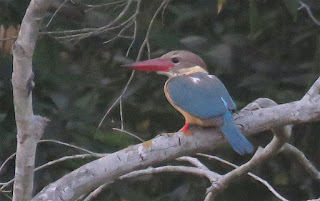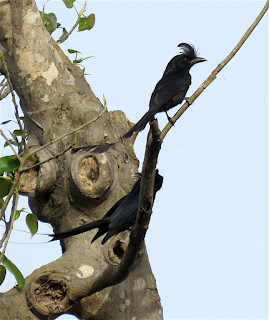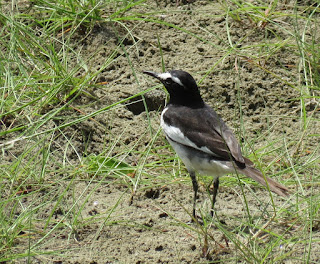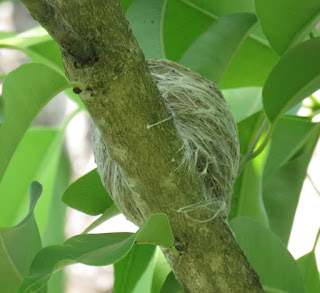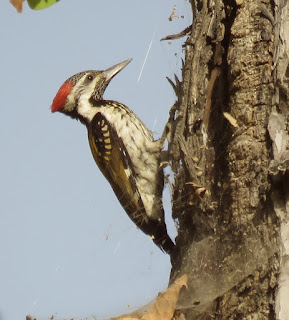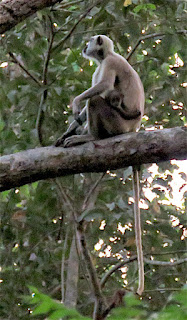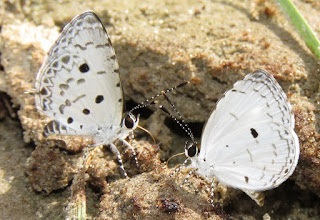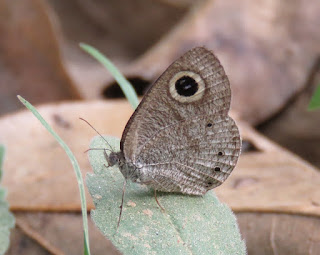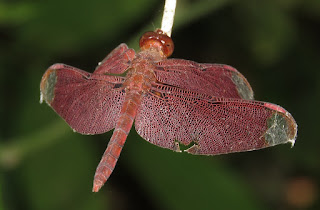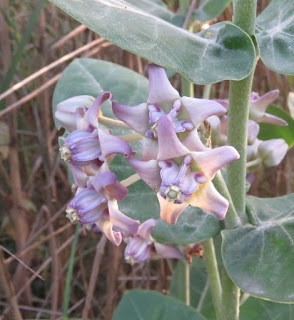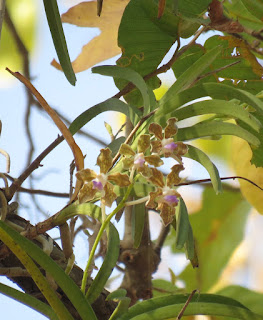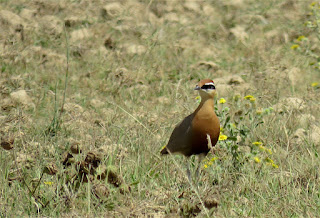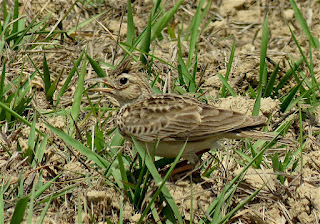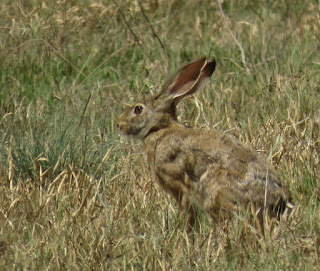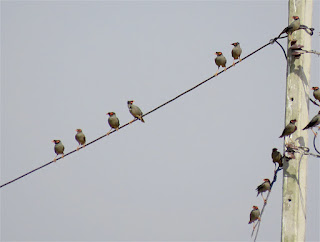Somehow, I
ended up taking a lot of bird photos on my Costa Rica in Spring tour this past
March – so many that I thought I’d do a blog with just the bird photos. I wanted
to also mention that I have another, slightly shorter tour to Costa Rica this coming late
July with a couple spaces still open.
This March
tour stays at six different lodges, while my July tour goes to only five,
mostly different ones. The one place that both have in common is the Savegre
River Valley and the Cerro de la Muerte area, famous for its large population
of Resplendent Quetzals. When designing this exciting summer tour a few years
ago, I wanted to make it significantly different from the spring tour (one
should definitely come to Costa Rica at least twice!). But I also decided one just
cannot come on any birding tour to Costa Rica and miss the most magnificent members
of the family Trogonidae, and considered by some to be one of the world’s most
spectacular birds. This past month we saw five and heard three or four others
in our one full day here.
I had a
co-leader-in-training with me on this tour, Luke Seitz, even though we had only
eight participants. With Luke’s extra help, almost everyone saw every bird, and
Luke even had the time to take some stunning photos with his high-end
photography setup.
I’ll just be
posting what I got here with my comparatively crude Canon PowerShot SX60HS,
such as this Long-tailed Silky-flycatcher, which in the darker afternoon light
and backlit sky was difficult to photograph. We saw these in several places, this
first one being on the drive down the Savegre River valley our first afternoon.
Savegre
Mountain Lodge had a few hummingbird feeders, but there were so many flowers
blooming this year, there weren’t many birds coming to them. This
White-throated Mountain-gem also worked hard to keep many of them away from one
feeder.
This
Spangle-cheeked Tanager kept returning to the deck outside the restaurant
windows, I think to fight its reflection.
We saw
several Black Guans, mostly where they belong up in trees, but a pair of them
along the jeep track just above our lodge provided the best photo op.
My summer
Costa Rica tour’s itinerary takes us to the Caribbean slope to four other
lodges in the mid-elevation foothills of the south and north, and then to two
lowland lodges on the coast and near the Nicaraguan border, all of them very
exciting places to bird. But my spring tour first takes us to the Pacific
Coast, which has much more pronounced dry and rainy seasons. March on the
Pacific side is quite hot and dry, but bird activity is usually quite high. On
the way to the southern Pacific Coast we stopped at a lodge to watch their
feeders and flowers. White-tailed Emerald and Snowy-bellied Hummingbird were
two really good finds here, and the fruit feeders were also a hit. This feeder
has a pair of Red-headed Barbets (female back left) and three Speckled Tanagers.
One of the
highlights of the spring tour is spending three days at the tiny and rustic
Bosque del Rio Tigre Lodge on the Osa Peninsula. It’s not super remote, just a
few hundred yards beyond the power grid, but it feels like a real jungle lodge,
tucked away in the forest across a small river.
During the
rainy season (mostly July-October on the Pacific side) the shallow river here can
turn into a dangerous torrent, but an unprecedented late and long-lasting rain
this past late November reshaped the entire floodplain like I had never seen
before. The owners of the lodge and other residents on the south side of Rio
Tigre were trapped there for 18 days.
This is an
incredibly birdy area. One morning we walked through the village (with good
habitat, including small marshes, forested hillsides, and brushy lots) for
about 2 1/2 hours before breakfast and saw over 100 species. Cherrie's Tanager
is one of the commoner birds here.
This Bare-throated
Tiger-Heron was below the bridge at Rincón, where we also saw the exceedingly
rare Yellow-billed Cotinga.
Almost as
white as the cotinga was this White Hawk, a pair of which flew right over the
lodge buildings and landed high overhead.
We had two American
Pygmy-Kingfishers at close range, but this one was mostly hidden from my
vantage point.
The female Black-throated
Trogon was the first sex of this species to be described, hence the scientific
name Trogon rufus. The male is green
above.
Several
birds com to the banana feeders at Bosque del Rio Tigre, including the endemic
Black-cheeked Ant-Tanager. One of our everyday birds on the tour was the Clay-colored
Thrush, the national bird of Costa Rica.
Gray-chested
Dove also occasionally came for bananas.
As did Lesson's
Motmot (a new name since the Blue-crowned Motmot of Mexico and Central America
was split into two species; the one from northeastern Mexico is now Blue-capped
Motmot).
Even Orange-billed
Sparrow came to the feeders, but we saw it more often in the deep forest
understory.
Slaty-tailed
Trogon is audible more often than not from the trails, but they’re not too hard
to see either.
We walked up
the stream one afternoon, spying our only Solitary Sandpiper of the tour near
some White Ibises.
This White-necked
Puffbird apparently had a nest along the track above the lodge.
On our way
north to the central Pacific side of Costa Rica, we stopped at a gas station
and found this pair of Tropical Mockingbirds with a chick nearby. This species
has only relatively recently colonized Costa Rica from the north.
We used to
have a full day and a morning at Carara National Park, but now we see most of the
southern Pacific coast specialties farther south, and recently the national
park started enforcing strictly their 8:00 a.m. opening time, eliminating the
best two and a half hours of birding of the day. Now we spend just one night
here and have one early morning before we head farther north, so I’ve changed
our plan to include a two-hour boat ride on the Tárcoles River.
It’s a
really fun and very different birding experience from the rest of the tour,
adding many water birds (including Southern Lapwings) and mangrove specialties
(Scrub Greenlet, Mangrove Vireo, Mangrove Yellow Warbler, among others). The
best bird on this year’s boat ride was this Collared Forest-Falcon spotted by
one of the participants sitting quietly in a tree on the bank. It flew just as everyone
got on it, usually the end of the story, but it moved to an even more open
perch, and Luke got some even more outstanding photos of it.
Before continuing
to Monteverde, we had lunch at Ensenada Lodge in the dry Guanacaste lowlands of
NW Costa Rica. Here we saw Lesser Ground-Cuckoo, Nutting’s Flycatcher,
Streak-backed and Spot-breasted Orioles, Turquoise-browed Motmot, Olive
Sparrow, Banded Wren, and a few other species we don’t see anywhere else on the
tour.
Then we had
a full day in the higher elevations of the famous Monteverde cloud forest. We
see some new birds here, such as Orange-bellied Trogon but also get a refresher
of some of the species we saw in the southern highlands, such as Collared
Redstart.
We also got
repeat views of Resplendent Quetzal, not always as easy here as in the Cerro de
la Muerte area. One sat still for a long time, and I finally acquiesced even
though it was too dark for a good photo. As soon as I clicked the shutter the
bird flew. A record shot at least.
But then it
sat even longer on another perch, giving me time to replace the spotting scope
with my camera on the tripod and take a photo with slow shutter speed.
The Plain
Wren was recently split into three species, all of which occur in Costa Rica (see Patterns of genetic and
morphological divergence reveal a species complex in the Plain Wren [Cantorchilus modestus] by Jacob R.
Saucier, César Sánchez, and Matthew D. Carling in The Auk: Ornithological
Advances, Volume 132, 2015, pp. 795–807), and we saw all three very well
on this tour. This one is now called Cabanis’s Wren, formerly the nominate
subspecies of Plain Wren, occurring in the highlands and on the Pacific slope
south to central Costa Rica. It’s the more colorful of the three and has the
highest and fastest song. I did some playback experiments with all three, and
unsurprisingly they respond quite aggressively to songs of all forms, even
though the main song types are recognizably different in precise pattern and
pitch. But most surprising was when I played a single male’s song of Canebrake
Wren (the Caribbean lowland form) to a Cabanis’s Wren at our hotel in
Monteverde. Rather than reacting territorially, it actually performed a highly coordinated duet (singing
the female song) with the recording (from the Ross & Whitney CD). I’ve
glanced at several papers dealing with wren duets, including specifically that
of the Plain Wren, and it doesn’t look like anyone has documented this bizarre
behavior – one species duetting with a recording of another species.
Moving
along, we had an afternoon and a morning to bird in the Arenal area, but just
as we got there, it began to rain. Luke spotted this roosting Great Potoo in an
area where one is known to live but chooses a different roost each day. It was
already rather wet by the time he found it.
Rain
continued the rest of the afternoon and much of the next morning, forcing us to
watch the feeders from under a roof, to no one’s disappointment. This Great
Curassow was one of three who slowly clambered up into a tree then made a huge
flapping effort to get to the top of this elevated feeding station otherwise occupied
by Montezuma Oropendolas and several tanagers.
Later in the
morning, the rain finally stopped, and we had some productive birding on the “Peninsula
Road” by Lake Arenal. This is always a good area for Long-tailed Tyrant.
This Red-billed
Pigeon was at our lunch stop near La Fortuna. Note that while it’s cere is
reddish, the bill itself is not – and even the specific epithet (flavirostris) means yellow-billed. So
how did it get that horribly inappropriate English name, now impossibly
entrenched?
We arrived
at our final lodge, Sueño Azul, in the late afternoon as a large roost of
egrets and herons was assembling at a small reservoir just behind our rooms.
We were
rather shocked to see this immature Reddish Egret perched among them; their
normal habitat is shallow saltwater lagoons on either coast, and here we were
60 kilometers inland at the base of the Central Mountains.
We had a
full morning at the La Selva Biological Station, where I took few photos. These
female Great Curassows were wandering along the entrance road as we waited for
our guide.
We had
another morning at Braulio Carrillo National Park, with a short stop at a
garden full of hummingbird flowers (Stachytarpheta
sp., Porterweed). My favorite bird from any Costa Rica tour, if we get lucky
enough to see it, is the incomparable male Snowcap.
We also had
time to bird on the grounds of Sueño Azul, which was very productive. A pair of
White-whiskered Puffbirds was on territory in a surprisingly open area; I’m
used to seeing this species (and other relatives in the same genus) in rather
dark, continuous forest understory with lots of looping woody vines. They sat
long enough for me to get the camera on the tripod and take some photos stopped
all the way down and at the lowest ISO setting – resulting in an exposure that
took a full second. Good thing puffbirds sit so still.
I even got
some video:
One of the
more amazing bird sights of the tour was this migrating group of Swainson's and
Broad-winged Hawks (we estimated 440 of the former and 195 of the latter in
this one flock). The southern half of Costa Rica had just experienced 3 days of
solid rain, so this was the result of a bottling up of migrants, and after
cruising north after the rain stopped, they were just starting to descend in
the late afternoon to find roosts in the forests on the property. On the next
morning, our last morning of birding on the lodge grounds, Swainson’s Hawks
were in trees all over the area.
The video
actually captures it much better:
We finished
the tour with a hike through some lovely cloud forests and along the stream at
the La Paz Waterfall Gardens.
Our last new
species of the tour was a pair of American Dippers of the rather distinctive
Costa Rican subspecies – quite pale gray overall with contrastingly darker
hood and wings.



















































